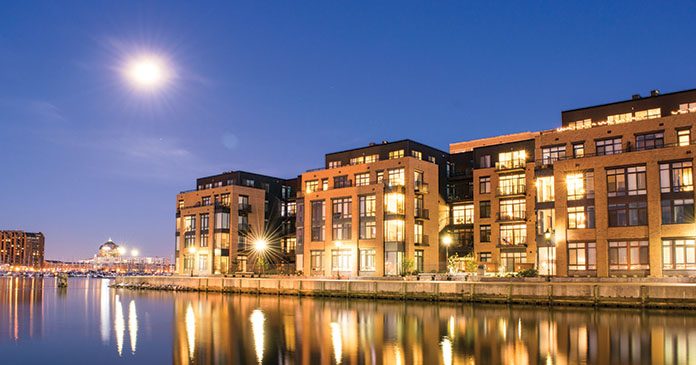Inclusionary zoning is perhaps the most popular affordable housing program among U.S. local governments today. It requires new housing developments to include some homes that are rented or sold at below-market-rate prices to address a lack of reasonably priced homes. But while there is no question that we need more housing at price points affordable to people of all income levels, inclusionary zoning isn’t working.
In fact, in a new study, I find that in the Baltimore-Washington region, the policy is making housing more expensive, not less.
Our region, like many parts of the country with strong economies and high-paying jobs, suffers from a housing shortage. The primary culprit is strict local zoning regulations that make it difficult for homebuilders to provide enough new homes in the places where people want to live. Over the past 20 years, the D.C. area (the faster-growing portion of the larger Baltimore-Washington region) has added only half as many new homes as it has residents.
Additionally, land use regulations—from bans on apartments on most of the land in every jurisdiction in the region, to requirements that new homes in some exurbs sit on multiple-acre lots—drive up the cost of the housing development that is allowed. In Arlington, where I live, multifamily housing is only permitted on 12 percent of residential land.
In response to high housing costs, policymakers in 22 of the region’s jurisdictions have implemented inclusionary zoning. Often inclusionary zoning programs require a portion of units to be affordable to residents earning 80 percent of median income, about $70,000 for households across the region. That means units that rent for about $1,800 per month. Some programs, like Baltimore’s, aim to serve residents earning as little as 30 percent of the median income.
By requiring homebuilders to provide subsidized homes, inclusionary zoning is essentially a tax on new housing construction, which raises the price of market-rate, non-subsidized homes. However, most jurisdictions in the region pair inclusionary zoning with “density bonuses” that allow developers to build more housing than they would otherwise be allowed to provide. These can partially or fully offset the cost of providing the subsidized units.
This means inclusionary zoning both allows for more housing construction and increases the costs of development—but what’s the overall effect?
According to my research, each year that a mandatory inclusionary zoning program is in place, a jurisdiction’s house prices increase by about 1 percent beyond what they otherwise would. This local estimate is in line with most studies of inclusionary zoning, which find that the policy has led to higher prices in the places that have adopted it.
Here’s what that means in practical terms: We’re relying on a housing affordability “fix” that makes the problem worse for everyone who doesn’t get a subsidized unit.
That might be tolerable if inclusionary zoning programs produced enough subsidized homes for the residents who qualify, but it doesn’t—not even close. Montgomery County has the longest history with inclusionary zoning in the country, and it also produces the region’s most below-market-rate housing units per year. Even so, fewer than 4 percent of Montgomery County homes are inclusionary zoning units. Baltimore policymakers have commonly waived inclusionary zoning requirements if developers can show that the cost of providing them would make a project unfeasible. Its program has produced only 34 homes for low-income families during the nine years it’s been in place.
Across the region, the subsidized units must be allocated by long wait lists or lotteries because many more people qualify than there are units available. That means when inclusionary zoning raises market-rate house prices, the burden falls hardest on people who are the least well-off.
As its name indicates, inclusionary zoning is marketed as a remedy for “exclusionary” zoning: local land use regulations that drive up home prices and keep people out. But in reality, it leaves these rules in place. The density bonuses that inclusionary zoning programs offer are only valuable because regulations prevent developers from building new homes—particularly lower-cost, environmentally and transit-friendly apartments —leaving us with shortages and high prices.
Taxing housing construction in order to get below-market-rate units makes no sense. Developers have every reason to build housing that’s affordable to most residents if we do away with the apartment bans, minimum lot size requirements and aesthetic design standards that make only expensive units worth building. Local policymakers could then focus on dedicating public resources to more direct forms of aid for the low-income households who need it.
Author Emily Hamilton is a research fellow with the Mercatus Center at George Mason University in Arlington, a former District of Columbia advisory neighborhood commissioner and the author of a new study on “Inclusionary Zoning and Housing Market Outcomes.”
















